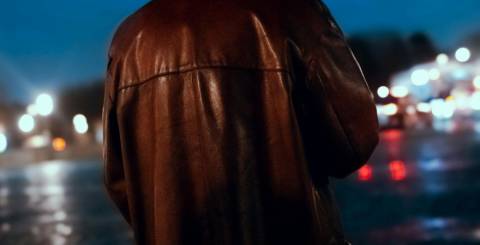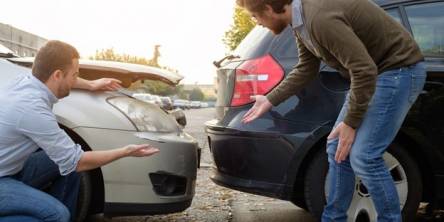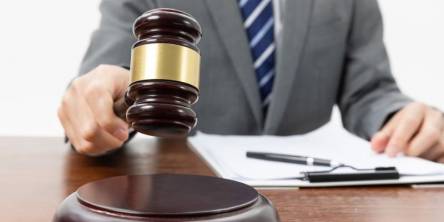The Legal Implications of Pedestrian Accidents

Drivers hit pedestrians when they are walking, jogging, or running. Unfortunately, because walkers aren't protected, these accidents often end in serious injuries or death. Places where accidents can happen include streets, crosswalks, and even parking spots. Realizing the law's effects is very important because it has a big effect on victims and their families. Pedestrian accident lawyers play a crucial role in these situations, helping victims navigate the legal process and seek compensation for their injuries. By understanding the legal implications, victims and their families can better manage the aftermath of such traumatic events.
Accidents involving pedestrians
Multiple things can lead to crashes involving pedestrians. An important factor is drivers who aren't paying full attention to the road, which is called distracted driving. In addition to lowering the driver's ability to respond quickly, speeding is a major cause of these crashes. Other reasons include not stopping at crosswalks, driving while drunk or high, and bad weather that makes it hard to see. Individual pedestrians are sometimes to blame, especially when they cross the street without looking at the traffic lights or jaywalks. Fatal crashes involving pedestrians are more likely to happen in cities with lots of traffic and busy crossings. More things that can cause crashes are bad road upkeep, dim street lighting, and a lack of sidewalk paths. It is possible to greatly lower the number of these accidents by teaching both drivers and walkers safe habits and improving the infrastructure.
Numbers of accidents involving pedestrians
Recently collected data shows that crashes involving pedestrians are on the rise. Accidents involving pedestrians have become much more common over the last ten years, according to the National Highway Traffic Safety Administration (NHTSA). Around 6,500 people were killed in car accidents in the US alone in 2022. These numbers emphasize the importance of raising knowledge and taking preventative steps to protect walkers. Pedestrian crashes are also more likely to happen to older adults, children, and people with physical disabilities. High-traffic cities with few facilities for pedestrians tend to have higher injury rates. This information helps lawmakers and urban planners find high-risk places and take specific steps to make walking safer.
Legal Duties and Accountability
Finding out who is responsible for a walking accident is very important. For example, both drivers and walkers have legal duties that can affect how a case is decided. By understanding these duties, it's easier to see who is at fault and how much each person is responsible. Establishing responsibility usually requires a detailed investigation that includes reviewing traffic laws, getting proof, and sometimes talking to experts. This process must be followed for the wounded person to get fair pay for their injuries and losses.
Driver’s Responsibility
Legally, drivers must take reasonable care when running their cars. For example, drivers should follow the rules of the road, stop for people at crosswalks, and avoid being distracted while driving. Accidents can be blamed on drivers who don't follow these rules and cause injuries to pedestrians. Key pieces of evidence used to prove driver carelessness include eyewitness stories, traffic camera video, and police records. Additionally, cars must follow speed limits and be extra careful in places with a lot of foot traffic, like school zones and home areas. Breaking these rules can lead to harsh punishments, like fines, license suspension, or even jail time for DUI or gross negligence cases.
Pedestrian’s Responsibility
It's also the responsibility of pedestrians to follow road rules and be careful. This means using crosswalks, listening to walking signs, and not unexpectedly crossing into traffic. Pedestrians may share responsibility for accidents if their carelessness makes them more likely to happen. Based on how much they contributed to the accident, comparative negligence rules in many states can limit how much a walker can get in compensation. Additionally, pedestrians need to be alert and not do anything distracting, like using their phones, while crossing the street. The safety of pedestrians can be improved even more by dressing in bright colors at night and looking at cars before crossing. Realizing and following these duties can help keep walkers safer and prevent crashes.
Actions to Take After a Pedestrian Accident
After a walking accident, knowing what to do right away can help protect your legal rights and make the claims process go more smoothly. In addition to preventing more damage, these steps can also help make sure that correct information is available for any future insurance or court claims. Actions taken right after an accident can have a big effect on how the case turns out and how much money is awarded as a settlement.
Immediate Actions
Initially, get medical help for any damage. Medical professionals should always be consulted, even if the injuries seem small. Immediately report the accident to the cops and make sure that a record is produced. Obtain the driver's contact information, including information about their insurance as well as that of any bystanders. Document the crash scene with pictures of any injuries you can see, any damage to the car, and the important road conditions. Ensuring that everything is carefully recorded can provide important proof if a formal claim is needed. Additionally, it is crucial to stay away from any comments that might be taken as giving up responsibility. Protecting your rights means staying cool and only giving officials true information.
Legal Actions
Take care of your immediate medical needs first, and then think about talking to a personal injury lawyer. Legal experts can tell you about your rights and help you through the claims process. A strong case can be made with their help in gathering proof, like medical records and crash reports. Statutes of limitations set time limits on when you can file a claim, so it's important to act quickly when considering legal action. Legal professionals can also talk to insurance companies on your behalf to make sure you get fair pay. Gaining knowledge about the law and having a skilled lawyer defend you can greatly affect how your case turns out. Legal representation can also help you understand the details of your case, such as possible problems of responsibility and the types of relief you may be eligible for.
Procedures for Claims and Compensation
Victims of accidents involving pedestrians may be able to get different kinds of relief. By learning about the claims process and the different types of settlements that are available, people can get the help they need. Multiple steps and contacts with insurance companies, medical providers, and lawyers can make the process hard to understand. Staying informed can speed up the process and raise the chances of a good result.
Filing a Claim
Starting the claim process by letting the other person's insurance company know about the accident is critical. Include all the necessary paperwork, such as medical records, police reports, and any accident scene proof. Claims adjusters will look over yours, and you might have to bargain to get a fair payment. Getting paid through the courts may be necessary if a deal can't be made. All contacts and costs linked to the accident must be carefully recorded. Bills for things like repairs, medical care, and other related papers should be included. You can improve your claim and case in talks or court by keeping a full record.
Differences in Pay
In the case of walking accidents, compensation can cover a wide range of losses. The insurance usually covers medical costs, like hospital bills and rehab costs. Additionally, victims can ask for money to make up for lost pay if their injuries keep them from working. You may also experience severe damage, pain, suffering, and mental turmoil. Compensation amounts will vary depending on the details of the accident and the severity of the injuries. Additionally, compensation can cover future medical bills and lost wages if the accidents cause long-term or lifelong impairment. Victims and their families can plan for the future and make sure they get the help they need by knowing the full range of possible benefits.
Similar Articles
Find the best attorney for your case with our guide. Learn key factors like experience, reputation, and communication to choose the right legal defense.
Car accident cases are complex and overwhelmingly stressful. After you've suffered severe injuries in a New York car accident due to someone else's negligence, expert legal representation can make a significant difference in the outcome of your accident case.
Deck collapse injuries are quite common and come when least expected. Accidents can happen when the deck is old, and some parts are weak. In rare cases, the accidents can be a result of overloading.
Car accidents come as a stress trigger and therefore they can easily be overwhelming in most cases. Knowing what actions to take right after an accident is important to both your safety and the defense of your rights. Here is a straightforward outline of some dos and don’ts following a car accident.
Train accidents can cause devastating losses to victims. They may incur serious injuries, emotional distress, and financial strain for those affected
The Centers for Disease Control and Prevention (CDC) report that approximately seven out of every 1,000 babies born in the United States experience birth injuries.
Losing a loved one in a fatal car accident is an unimaginable tragedy, often leaving families overwhelmed by grief and facing financial hardships. Medical bills, funeral expenses, and the sudden loss of income can add to the emotional burden.
The Centers for Disease Control and Prevention estimate that about 1.7 to 3.8 million traumatic brain injuries happen each year in the US and 10% of these cases are due to sports and recreational activities.
Accident lawyers specialize in personal injury law, helping clients obtain compensation for injuries and losses due to various accidents. Their expertise is crucial in navigating the complex legal landscape that follows these unfortunate events









